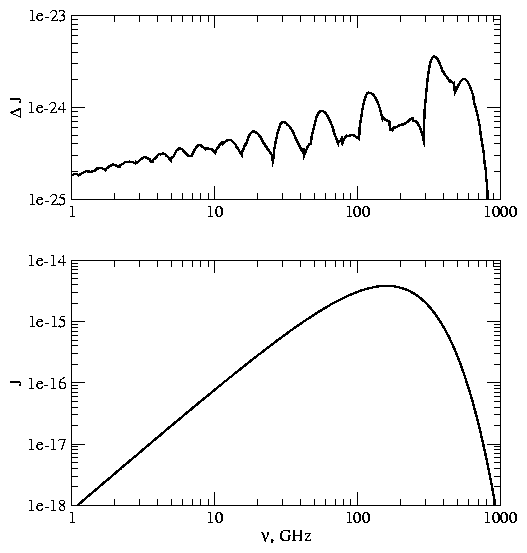
Study of the cosmic microwave background radiation (CMBR) was advanced especially over the last ten years. The observed CMBR spectrum may be fitted by the planck function at the temperature T=2.725 ± 0.001 K with relative accuracy 10-4. It means that radiation as well as the baryonic matter were under thermodynamical equilibrium at the begining of the epoch of the primordial plasma recombination. Nevertherless, the CMBR spectrum has to be a litlle distorted relative to the planck one. This distortion is a trace of different nonequilibrium processes which took place during the period of the recombination.
For the first time CMBR distortion concerned with recombination of the primordial hydrogen plasma was considered in the work Bernshtein et al. (Sov. Astron. J., v. 54, 727, 1977) followed by Dubrovich & Stolyarov (Astron. Astrophys. v. 302, 635, 1995), Burgin (Astron. zhurnal, v. 80, 771, 2003), Dubrovich & Grachev ( Pis'ma v Astron. zhurnal, v. 30, 723, 2004).
In our investigation this CMBR distortion (see Fig. 1) is calculated independently in frequency band from 1 GHz to 100 GHz in the frame of the standard cosmological model for different values of cosmological density parameters: nonrelativistic matter density Ωm and baryonic matter density Ωb. Comparison of these results with observational data which will be obtained from planned experiments may be used for independent determination of the cosmological parameters Ωm and Ωb.
Our results are in a good agreement with results of work Burgin (2003).

These results were published in Gravitation & Cosmology, v. 11(2005), No. 1-2, pp. 161-165 and astro-ph/0509807
|
webmaster
Last update: Oct. 28, 2005 |
Supported by RFBR
grant 03-07-90200 |